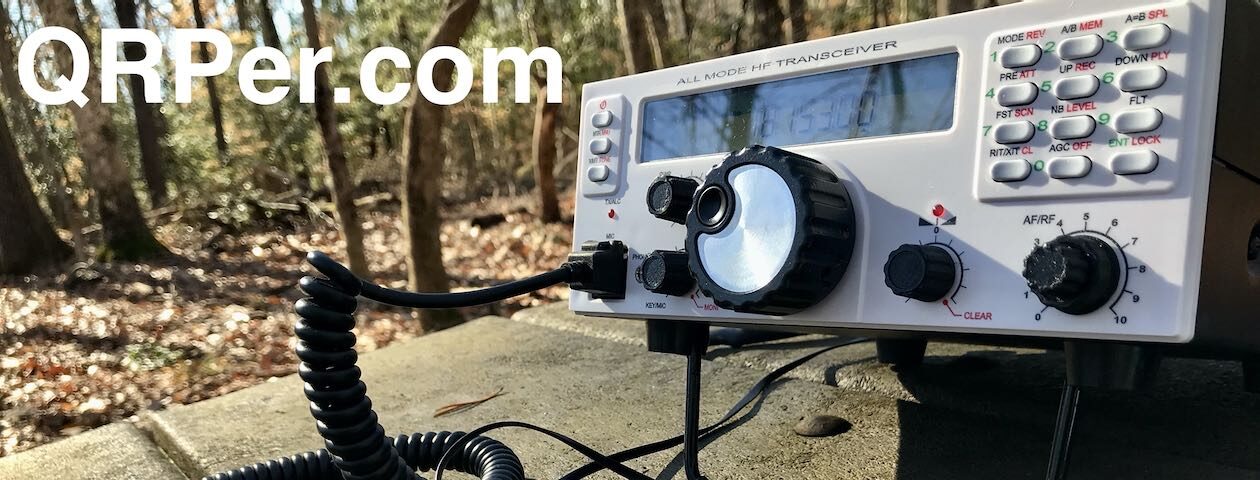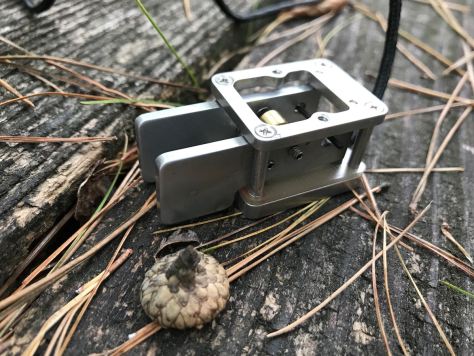 A couple days ago I finally took delivery of the uSDX/uSDR transceiver I ordered in late October from this seller on eBay. I’ve been tinkering with it in the shack since then and have started to form some initial impressions.
A couple days ago I finally took delivery of the uSDX/uSDR transceiver I ordered in late October from this seller on eBay. I’ve been tinkering with it in the shack since then and have started to form some initial impressions.
The uSDX is a super cheap transceiver and, to be clear, my expectations were (spoiler: thankfully) very low.
If you’ve been here for long, you’ll know that I don’t normally test or review super cheap transceiver varieties found on eBay, AliExpress, etc. So many people asked me to check out the uSDX, however, that I decided I would try to give it a shake out.
I’ve yet to take this little radio to the field, but I have made a couple dozen contacts from the shack, all in CW and I’ve done a lot of listening. Yesterday afternoon, I even hooked it up to an oscilloscope.
It’s still early days and I’m sharing the following observations and notes with the hope that uSDX owners might be able to guide me if I need to make menu adjustments to sort out a few issues.
More specifically, there are two big cons with my uSDX:
Con #1: The Audio

Trying to be diplomatic and kind with my words here, but let’s just say the uSDX audio leaves much to be desired.
I think it’s great this little transceiver has a built-in top-mounted speaker, but it produces some of the harshest, most spluttery audio I’ve ever heard in a radio.
On top of this, the volume control (which requires going into an embedded menu item to adjust) is just…strange. It’s hard to explain, but the audio feedback isn’t what I would expect from a volume control or AF gain. It seems like each volume control step (starting at “-1” and going up to “+16”) is a mix of both AF and RF gain values. It doesn’t have a fluid amplification progression like I would normally expect.

In fact, I can’t really turn the volume up to +16 because on many bands around level +14 or +15, it starts to emit a really loud squeal.
Although very minor compared with the issues above, the audio amplification chain also has an ever-present hiss.
In addition, even with the volume turned to “-1” I can still hear splattering and even garbled whispers of CW signals if connected to an antenna.
I hope I’m missing something here and the audio can be tailored for better listening. Perhaps there’s a combination of adjustments I can make in the menu options to help?
Please comment if you own a uSDX and can provide some feedback.
Con #2: The Receiver
Again, unless there’s a magic combination of adjustments I can make in menu items, I find the receiver of the uSDX to be incredibly anemic.

I took the uSDX to my buddy Vlado (N3CZ) yesterday and we hooked it up to an analog oscilloscope and signal generator.
We concluded that the uSDX is very sensitive, but the front end seems to be as wide open as a barn door.
This confirmed my on-the-air observations made over the past two days: even with the 500 Hz DSP filter engaged, CW signals as far away as +1.7 kHz could easily bleed through. In fact, quite often when I tune to a POTA or SOTA station operating CW, I could even hear FT8/FT4 stations bleeding through from far across the band.
I couldn’t help but think if I had taken the uSDX on my recent Mt Mitchell SOTA activation instead of the QRP Labs QCX-Mini, there’s no possible way I could have handled the pileup. The uSDX receiver would have completely fallen apart because it shows no ability to handle tightly spaced signals.
Again, if you’re a uSDX owner and can provide some insight here, I would very much appreciate it.
Still testing the uSDX TX
 One of my main goals with purchasing the uSDX was to test the transmit signal to see how clean it might be and if there were spurs in any harmonics.
One of my main goals with purchasing the uSDX was to test the transmit signal to see how clean it might be and if there were spurs in any harmonics.
Vlado hooked up the uSDX to his oscilloscope and we discovered that it did produce spurious emissions in harmonics of the 40M band. The spurs were negligible and we both assume it might possibly be within FCC guidelines.
With that said, Vlado didn’t completely trust this particular analog oscilloscope because there appeared to be a slight fault in its BNC input port. We ran enough tests–and even compared the uSDX to my KX2–to know that there are definitely faint spurious emissions and that the CW transmit signal isn’t nearly as clean as the KX2.
Here’s a 2 second video clip showing the uSDX transmitting CW on 7 MHz into the scope:
Click here to view on Vimeo.
I plan to hook the uSDX to a digital oscilloscope to get more accurate results in the near future.
Not all cons
The uSDX does have some positive attributes.
For example, the QSK is quiet and even full break-in. This little radio is also chock-full of features. I’ve even found that though it’s advertised as an 8 band radio, mine will transmit on 10 bands; everything from 160-10 meters.
I think if I planned to operate the uSDX on SSB when the bands were relatively quiet, it might do quite well for casual contacts.
Time will tell…
 To be clear, though, the issues above can be deal-killers for me.
To be clear, though, the issues above can be deal-killers for me.
I want my transmitted signal to be clean enough to at least meet FCC requirements–I like being a good neighbor on the bands. This might require some modifications on the output, but let’s see what a digital oscilloscope might reveal.
Of course, if the uSDX can’t handle multiple CW signals being thrown at me at once, I can’t see how this would possibly work as a SOTA or POTA field radio.
I can already tell that the ergonomics of the particular uSDX model I purchased will likely lead to–as Spock put it in Star Trek IV–some “colorful metaphors.” Especially when I reach for the volume control buried behind a menu item. (I mean, seriously?)
Again, if you own a similar uSDX, I’d love to hear your comments and suggestions!




































